Art and Culture
The Indian Art That Captivated Europe Centuries Ago
Discover how Indian art mesmerized European aristocracy with vibrant colors and intricate designs, shaping artistic movements for centuries to come.
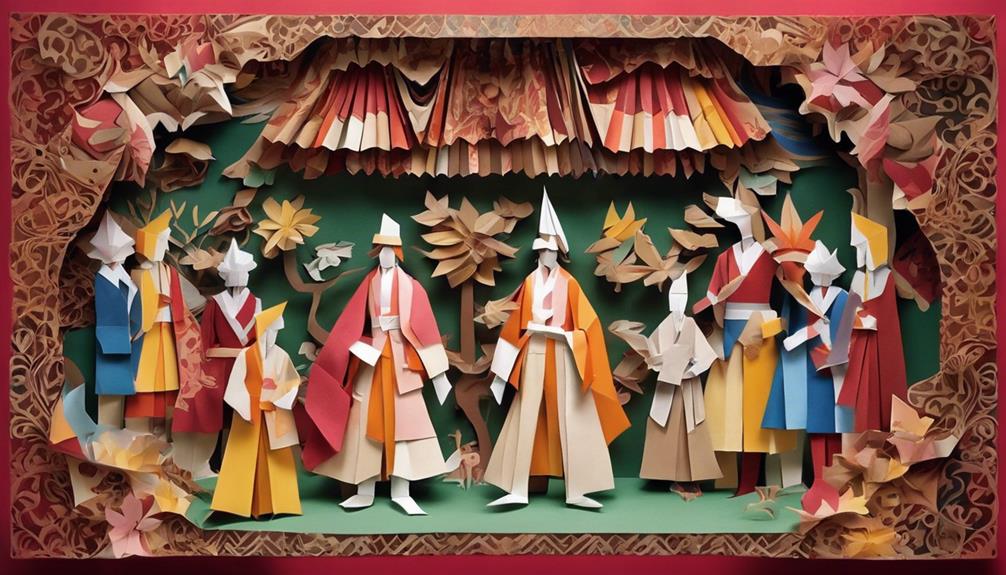
European art enthusiasts were captivated by the intricate designs and vibrant colors of Indian art centuries ago. Textiles like chintz, dating back to the 17th century, mesmerized aristocracy and royalty, leading to specialized workshops in Europe replicating Indian patterns. Mughal miniatures depicted detailed royal court scenes, influencing European art with Persian and Mughal fusion. Rajput paintings showcased mythological narratives and spiritual themes, leaving a lasting impression on European audiences. This cross-cultural exchange inspired European artists, like the Pre-Raphaelites, to infuse Indian aesthetics into their works, shaping artistic movements. The enduring impact of Indian art on global art scene emphasizes its profound influence.
Key Takeaways
- Indian textiles like chintz with intricate designs and vibrant colors fascinated Europe in the 17th century.
- Mughal miniatures depicted royal court scenes with Persian and Indian influences, captivating European audiences.
- Rajput paintings portrayed mythological narratives with rich symbolism, leaving a lasting impression on European art.
- Spiritual themes in Indian art conveyed deep Hindu spirituality, influencing European artists.
- The fusion of Indian art styles with European influences inspired the Pre-Raphaelites and Art Nouveau movement.
European Fascination With Indian Art
European art enthusiasts were captivated by Indian art due to its intricate designs and vibrant colors, sparking a trend that influenced fashion and interior decoration. The European fascination with Indian textiles, particularly chintz, dates back to the 17th century when these fabrics became highly coveted in European markets. The intricate patterns and vivid hues of Indian chintz textiles mesmerized the European aristocracy and royalty, leading to the establishment of specialized workshops aimed at replicating these sought-after designs. This craze for Indian textiles not only influenced fashion trends but also left a lasting impact on interior decoration during the 17th and 18th centuries in Europe.
Moreover, European artists and designers drew inspiration from Indian chintz patterns, incorporating them into their own creations. This fusion of Indian artistic elements with European artistry contributed significantly to the Orientalist trend that emerged during this period, symbolizing a deep-seated fascination with the cultural and artistic heritage of India.
The allure of Indian art and textiles in Europe represented exoticism, luxury, and a profound admiration for the artistic traditions of India, shaping the artistic and fashion landscapes of the time.
Mughal Miniatures and Courtly Life

Mughal miniatures, exquisite court paintings from the Mughal Empire in India, depicted intricate scenes of royal courtly life with remarkable attention to detail. These artworks not only showcased the opulence and grandeur of the Mughal courts but also highlighted historical events and royal portraits.
Through a fusion of Persian, Indian, and Mughal artistic styles, these miniatures created engaging visual narratives of the cultural significance and richness of the era.
Intricate Mughal Art
The intricate Mughal art of Mughal miniatures and courtly life captivated audiences with its vibrant colors and meticulous details. Mughal miniature paintings, renowned for their depiction of courtly life, portraits, and scenes from Indian epics, showcased exquisite craftsmanship and rich storytelling. Artists like Basawan and Jagan from the Mughal court masterfully created mesmerizing paintings on various mediums, portraying lavish gardens and royal settings with intricate details. This art form, blending Persian and Indian styles, not only influenced European art but also represented a fusion of cultural and artistic elements that continue to inspire global art enthusiasts. The legacy of Mughal art endures through its historical significance, intricate designs, and the vivid portrayal of the Mughal era's essence.
| Mughal Art Highlights | |
|---|---|
| Exquisite Details | Vibrant Colors |
| Meticulous Craftsmanship | Rich Storytelling |
| Fusion of Cultural Styles | Historical Significance |
Royal Court Depictions
Art enthusiasts marvel at the intricate depictions of royal court scenes and courtly life in Mughal miniatures, capturing the opulence and grandeur of the Mughal courts. These miniatures, created by artists like Basawan and Jagan, showcase a fusion of Persian and Indian art styles, highlighting the cultural richness and sophistication of Mughal society.
Within these miniature paintings, one can observe detailed portrayals of ceremonies, daily activities, and the attire of emperors and their retinue. The Mughal miniatures weren't merely artistic representations but also served as a window into the opulent world of the Mughal courts, attracting the admiration of European collectors.
The vibrant colors, intricate detailing, and narrative storytelling found in these artworks influenced European art, sparking a fascination with Indian aesthetics and culture. Through the lens of Mughal miniatures, the fusion of Persian and Indian artistic traditions found expression, contributing to the broader cultural exchange between East and West during that period.
Cultural Significance Portrayed
Depicting the opulence and grandeur of royal courtly life, Indian miniatures intricately captured the cultural richness and sophistication of Mughal society. These Mughal miniatures served as a proof to the vibrant cultural exchange between India and Europe, influencing European artistry. The intricate details, vibrant colors, and narrative storytelling in these miniatures portrayed Indian courtly life with unparalleled finesse. From the elaborate clothing worn by nobles to the architectural marvels of the Mughal era, these artworks encapsulated the essence of Indian courtly traditions.
The portrayal of opulent courtly life in Mughal miniatures not only fascinated European artists but also inspired them with the exoticism and richness depicted. The influence of Indian art on European artistic expressions can't be underestimated, as these miniatures provided a window into a world of luxury and cultural sophistication previously unseen in European art. Through these exquisite artworks, the Mughal miniatures continue to stand as a proof to the enduring legacy of Indian artistic prowess and cultural significance.
Rajput Paintings and Mythological Narratives

Rajput paintings from India intricately depicted mythological narratives and royal court scenes, showcasing rich colors and detailed patterns that fascinated viewers.
These vibrant artworks often portrayed Hindu epics like the Ramayana and Mahabharata, reflecting a fusion of indigenous Indian styles with Persian and Mughal influences.
Through their intricate detailing and spiritual themes, Rajput art left a lasting impression on European audiences, highlighting the significance of mythological stories and symbolism in these enchanting paintings.
Mythological Rajput Stories
In mythological Rajput stories, vibrant scenes of valor, love, and devotion come alive through intricate detailing and vibrant colors. These Rajput paintings depict narratives from Indian epics like the Ramayana and Mahabharata, showcasing the heroic deeds of Rajput rulers and gods. The art form captures the essence of these mythological tales, emphasizing the cultural and social ethos of the Rajput courts through its storytelling.
Rajput paintings intricately portray the epic battles and noble sacrifices found in the Ramayana and Mahabharata.
The use of vibrant colors and detailed compositions in Rajput art brings to life the emotions and virtues of the characters in these mythological narratives.
Through their art, Rajput painters have played a significant role in preserving and celebrating the rich tradition of Indian mythology, ensuring that these stories endure through generations.
Symbolism in Paintings
Symbolism in the intricate Rajput paintings vividly conveys themes of love, bravery, devotion, and religious stories through rich iconography. Rajput paintings, deeply rooted in mythological narratives, epitomize the fusion of artistry and cultural heritage. These paintings weren't merely decorative; they served as a medium to encapsulate profound narratives and values.
The iconography in Rajput paintings was meticulously crafted to represent intricate details of royal portraits, court scenes, and mythological stories with vibrant colors and meticulous precision.
Through the art of symbolism, Rajput artists showcased a profound connection to nature, spirituality, and the essence of their cultural heritage. Mythological narratives depicted in these paintings, often drawn from epics like the Ramayana and Mahabharata, narrated heroic tales and moral values that were deeply ingrained in the fabric of Indian society.
The symbolic elements in Rajput paintings functioned as a visual language, effectively conveying complex narratives, emotions, and cultural beliefs to the viewers, enriching the artistic experience with layers of meaning and significance.
Spiritual Themes in Indian Art

Spiritual themes in Indian art intricately depict Hindu deities like Vishnu, Shiva, and Devi, embodying diverse aspects of divinity.
- Indian artists: Indian artists have a longstanding tradition of portraying spiritual themes in their art, showcasing a deep connection with Hindu mythology and spirituality.
- Hindu deities: The representation of Hindu deities in Indian art serves not only as a visual depiction but also as a means to convey profound spiritual teachings and values.
- Symbolism: Significance plays an essential role in Indian art, with elements like colors, gestures, and objects carrying deep spiritual meanings that enhance the viewer's understanding of the divine narratives being depicted.
Indian art's portrayal of spiritual themes goes beyond mere aesthetics; it serves as a visual medium for storytelling, moral teachings, and philosophical insights. Through intricate details and symbolic representations, Indian artists convey the essence of Hindu spirituality, inviting viewers to contemplate the mysteries of existence and the interconnectedness of all beings.
Influence on European Artists
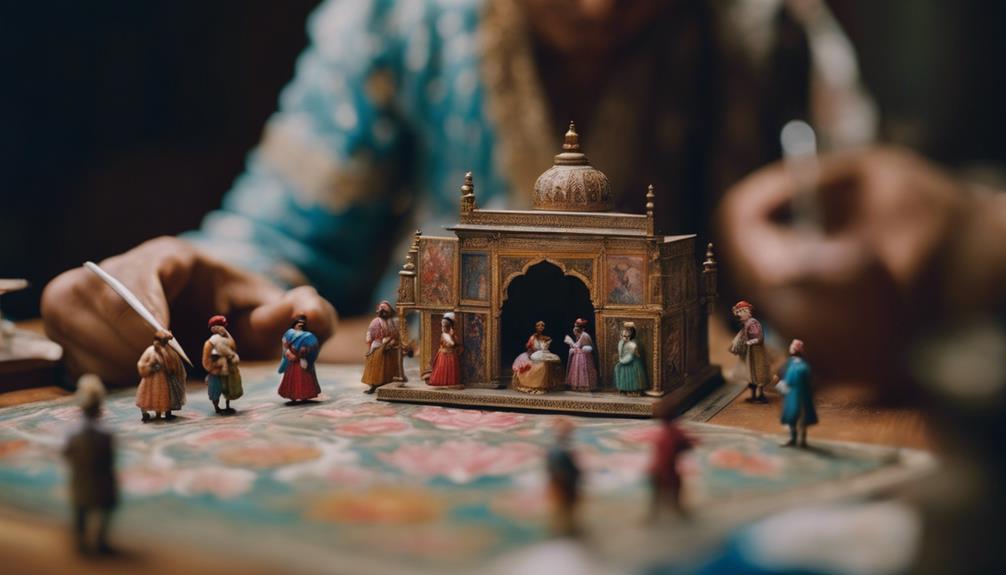
European artists found themselves captivated by the intricate details, vibrant colors, and spiritual themes present in Indian art. The fusion of Indian artistic styles with Persian and Mughal influences inspired European and American painters, shaping the course of art history. The deep connection to nature and spirituality evident in Indian court paintings resonated strongly with European artists, influencing their own interpretations of these themes in their works. This cross-cultural exchange resulted in a rich and diverse artistic landscape, where the mesmerizing qualities of Indian court art, blending reality with decoration, left a lasting impact on European artistic traditions.
| European Artists | Influence of Indian Art |
|---|---|
| Inspired | Fusion of artistic styles |
| Resonated | Spiritual connections |
| Impactful | Rich and diverse art |
Pre-Raphaelites and Indian Art

The Pre-Raphaelites, a group of 19th-century British artists, drew significant inspiration from Indian art and textiles.
- Indian textiles, particularly chintz fabrics, captivated the Pre-Raphaelites due to their vibrant colors and intricate patterns, sparking a fascination with the rich visual tapestry of Indian craftsmanship.
- The incorporation of motifs and designs from Indian art into their paintings by the Pre-Raphaelites showcased a harmonious blend of Eastern and Western artistic styles, illustrating a cross-cultural exchange of creativity.
- Artists like William Morris and Edward Burne-Jones were notable for infusing Indian aesthetics into their works, reflecting the profound influence of Indian art on the Pre-Raphaelite movement and its exploration of beauty beyond traditional Western norms.
The Pre-Raphaelites' embrace of Indian art not only enriched their own artistic expressions but also played a pivotal role in shaping the Orientalist trend in European art and design throughout the Victorian era.
Art Nouveau Movement Connection
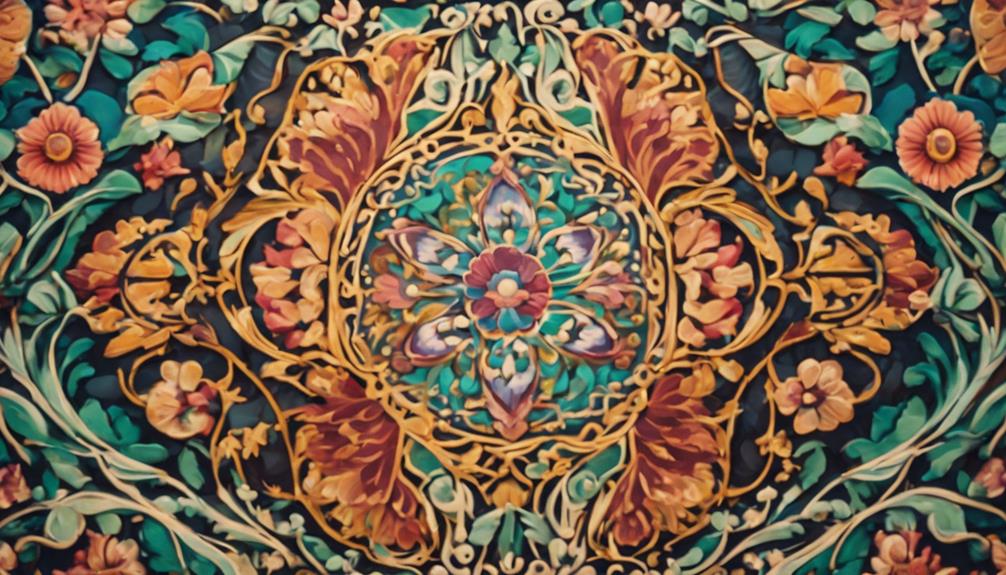
Inspired by the enchanting allure of Indian chintz textiles in Europe, the Art Nouveau movement found artistic resonance in the intricate patterns and vibrant colors that adorned these exotic fabrics. European artists, captivated by the richness and complexity of Indian chintz designs, incorporated elements of these textiles into their own creations, shaping the distinctive aesthetic of Art Nouveau.
The vibrant colors and intricate designs of Indian chintz textiles served as a wellspring of inspiration for Art Nouveau artists, influencing their approach to form and decoration.
The infusion of Indian chintz motifs into the Art Nouveau movement marked a significant cultural exchange, bridging continents and blending artistic traditions. This connection not only enriched the visual language of European art but also highlighted the global interconnectedness of creative expression.
The legacy of this artistic dialogue endures, underscoring the enduring impact of Indian chintz textiles on the evolution of global art.
Enduring Impact on Global Art

Having influenced European and American textiles, Indian chintz textiles continue to shape contemporary global art. The enduring impact of Indian chintz textiles on the art world is undeniable, with contemporary artists drawing inspiration from these historically significant textiles. This influence transcends time and continues to be a driving force in the world of art.
Here are three key ways in which Indian chintz textiles have left their mark on global art:
- Inspiration for Contemporary Artists: Indian chintz textiles have inspired a new generation of artists worldwide, who incorporate elements of these textiles into their modern creations, bridging the gap between traditional art forms and contemporary expressions.
- Cultural Exchange: The popularity of Indian chintz textiles in Europe highlights the profound cultural exchange between India and the Western world, showcasing how art can transcend geographical boundaries and time periods.
- Legacy in Global Art: Indian chintz textiles have established a lasting legacy in the global art scene, emphasizing the enduring impact of Indian art on a worldwide scale.
Frequently Asked Questions
What Kind of Influence Did the Europeans Have on Indian Paintings?
Europeans influenced Indian paintings through a cultural exchange that introduced new artistic techniques and styles. European artists brought perspectives on realism and perspective that impacted Indian court painters, leading to a fusion of artistic elements.
This exchange resulted in a blend of intricate details and vibrant colors in Indian art, reflecting a cross-pollination of ideas and techniques. The influence of Europeans on Indian paintings showcased a dynamic evolution in artistic expression and style.
What Is the Famous Ancient Art in India?
Ancient India is known for a myriad of art forms, with one of the most famous being Madhubani paintings. Originating from the Mithila region, these intricate artworks feature colorful designs depicting nature, mythology, and daily life. Created with natural pigments and often on walls or paper, Madhubani paintings showcase the rich cultural heritage and artistic talent of India.
They continue to be admired for their unique style and storytelling elements, engaging art enthusiasts worldwide.
How Did Indian Artists Come Under the Influence of European Style of Painting in British Period?
During the British period, Indian artists came under the influence of European style of painting through colonial interactions and exposure to Western art techniques.
This blending of Indian and European painting styles resulted in unique artistic expressions reflecting cultural exchange. The demand for hybrid artworks by British patrons created a market for art that combined elements of both traditions.
Indian artists incorporated Western perspectives and techniques while retaining their cultural motifs, leading to a fusion of artistic influences.
Which Paintings Showed the Social Life of Europeans in India Are Called?
Paintings depicting the social life of Europeans in India are known as 'Company School' paintings. Emerging in the 18th and 19th centuries, these artworks portrayed daily life, landscapes, and cultural interactions in India.
Commissioned by British East India Company officials and traders, Company School paintings offer a fusion of Indian and European artistic styles. They serve as historical records of colonial encounters, providing insights into the social dynamics of that era.
Conclusion
To sum up, the mesmerizing Indian art that enthralled Europe centuries ago continues to inspire and influence artists worldwide.
From Mughal miniatures to Rajput paintings, the spiritual themes and mythological narratives depicted in Indian art have left a lasting impact on global artistic expression.
The connection between European artists, such as the Pre-Raphaelites, and the Art Nouveau movement, demonstrates the enduring legacy of Indian art on the world stage.
Art and Culture
Revolutionize Your Mornings with Ryze Organic Mushroom Coffee

Coffee lovers, get ready to experience a game-changing brew! Ryze Organic Mushroom Coffee is taking the world by storm, offering a unique blend of premium coffee and medicinal mushrooms. Let’s dive into what makes this innovative beverage so special and why it might just become your new morning ritual.
What Sets Ryze Organic Coffee Apart?
Ryze Coffee isn’t your average cup of joe. This organic blend combines high-quality coffee with powerful medicinal mushrooms like cordyceps and lion’s mane. The result? A rich, flavorful brew that not only wakes you up but also supports your overall well-being.
Organic Ingredients
Uses only organic ingredients for a healthier blend
Medicinal Mushroom Blend
Combines high-quality coffee with powerful medicinal mushrooms
Available as Instant Coffee
Can be prepared instantly, convenient for busy mornings
Cognitive Enhancement
Supports cognitive enhancement through lion’s mane mushroom
Health Benefits of Ryze Mushroom Coffee
The unique combination of coffee and mushrooms in Ryze Organic offers potential health benefits that go beyond your typical caffeine boost. Let’s explore some of these advantages:
- Cognitive enhancement from lion’s mane mushroom
- Energy and endurance support from cordyceps
- Antioxidant properties from both coffee and mushrooms
- Potential immune system support
While Ryze Coffee provides these potential benefits, it’s important to remember that it’s not a substitute for a balanced diet and healthy lifestyle.
Brewing Your Perfect Cup of Ryze
One of the best things about Ryze Organic Mushroom Coffee is how easy it is to prepare. Available in instant coffee form, you can enjoy a delicious cup in no time. Here’s a quick guide to brewing your perfect cup:
- Boil water and let it cool for about 30 seconds
- Add one sachet of Ryze Coffee to your mug
- Pour in 8-10 ounces of hot water
- Stir well and enjoy!
For an extra treat, try adding a splash of your favorite milk or a natural sweetener.
Special Considerations
While Ryze Organic Mushroom Coffee is suitable for many, there are a few things to keep in mind:
Ryze Coffee Considerations
If you’re following a specific diet or have health concerns, it’s always best to consult with a healthcare professional before adding Ryze Coffee to your routine.
Ryze Coffee: A Sustainable Choice
Ryze Organic Mushroom Coffee isn’t just good for you; it’s also good for the planet. The company is committed to using organic ingredients and sustainable practices in their production process. By choosing Ryze, you’re supporting environmentally friendly coffee cultivation and reducing your carbon footprint.
For more information on sustainable coffee practices, check out Coffee Lovers 101 Coffee Culture section.
Conclusion: Elevate Your Coffee Experience with Ryze Organic
Ryze Organic Mushroom Coffee offers a unique and exciting way to start your day. With its blend of premium coffee and medicinal mushrooms, it provides a flavorful brew that may support your cognitive function, energy levels, and overall well-being. Whether you’re a coffee connoisseur looking to try something new or someone interested in the potential health benefits of functional beverages, Ryze Coffee is definitely worth a try.
Ready to revolutionize your morning routine? Give Ryze Organic Mushroom Coffee a shot and experience the difference for yourself. For more coffee tips, recipes, and guides, be sure to explore Coffee Lovers 101 Coffee Guides and Tips and Tricks sections. Here’s to healthier, more energized mornings!
Art and Culture
Abstract Art That Will Bend Your Perception
Knock your senses off balance with mind-bending abstract art that challenges your perception and sparks curiosity.

Abstract art, with its roots in the early 20th century, revolutionized traditional artistic forms. It emphasizes pure expression, texture, and composition, challenging viewers' perceptions in intriguing ways. By utilizing colors, shapes, and patterns, artists evoke emotions and convey themes. Abstract art encourages curiosity, creativity, and experimentation, aiming to evoke a wide array of emotions and interpretations. Through unique techniques and manipulation of elements, abstract art embodies a transformative power that can reshape one's perception of the world.
Key Takeaways
- Abstract art challenges traditional perception.
- Utilizes shapes, colors, and textures to evoke new perspectives.
- Promotes innovative interpretations and emotional connections.
- Encourages viewers to explore subjective narratives.
- Stimulates curiosity and creativity through enigmatic compositions.
Origins of Abstract Art
Emerging in the early 20th century, abstract art revolutionized traditional artistic expression by focusing on non-representational forms. One of the pioneers in this movement was Wassily Kandinsky, a Russian artist known for his groundbreaking work in abstract art. Kandinsky's shift away from representational art towards pure expression paved the way for a new form of artistic interpretation.
His paintings, such as 'Composition VII' and 'Yellow-Red-Blue,' exemplify the use of shapes, colors, and lines to evoke emotions and convey inner feelings without relying on recognizable subject matter.
Kandinsky's influence on abstract art extended far beyond his own creations, inspiring a generation of artists to explore the depths of self-expression through non-representational forms. By emphasizing the power of color, shape, and line to create movement, depth, and texture in artworks, Kandinsky played a significant role in shaping the evolution and development of abstract art as a genre.
Key Characteristics of Abstract Art

Abstract art captivates viewers through its unique characteristics that emphasize shapes, colors, and lines to evoke emotions and create visual interest. Artists in the genre focus on non-representational forms, using elements like texture and composition to draw viewers into the artwork, creating a sense of movement and depth. Originating in the early 20th century as a departure from representational art, abstract art emphasizes pure expression, allowing for self-expression and communication of emotions and energy. Curiosity, imagination, and creativity are vital components of abstract art, pushing boundaries and constantly experimenting with new techniques and mediums.
| Key Characteristics of Abstract Art | |
|---|---|
| Non-representational focus | Shapes, colors, and lines are utilized to create visual interest, devoid of recognizable objects or forms. |
| Emphasis on texture and composition | Artists utilize texture and composition to engage viewers, providing a sense of movement and depth within the artwork. |
| Origin as a form of pure expression | Abstract art emerged in the early 20th century, prioritizing the expression of emotions and energy over representationalism. |
| Encouragement of curiosity and creativity | Abstract art thrives on curiosity, imagination, and creativity, encouraging artists to experiment with new techniques and mediums. |
Impact of Color in Abstract Art

Color in abstract art serves as a powerful tool for artists to convey emotions, messages, and themes.
By exploring color symbolism, artists can communicate complex ideas and evoke specific responses from viewers.
Understanding the emotional impact and theory behind color choices enhances the viewer's appreciation and interpretation of abstract artwork.
Color Symbolism in Art
The importance of color symbolism in art lies in its ability to convey emotions, moods, and themes within abstract artworks. Artists strategically utilize colors to evoke specific responses and create visual impact in their creations.
Different colors carry symbolic meanings, such as red symbolizing passion, blue evoking calmness, and yellow representing optimism. These symbolic meanings influence how viewers perceive and interpret abstract art, shaping their emotional responses.
The choice of colors in abstract art has a profound impact on the overall mood, energy, and interpretation of the artwork. Understanding color symbolism in abstract art enhances the viewer's experience by providing insight into the artist's intentions and emotional narrative.
Emotional Impact of Color
Understanding how colors in abstract art evoke emotions is essential to appreciating the emotional impact of color in artistic compositions. Color plays a vital role in conveying different moods and feelings within abstract artworks. Artists strategically utilize color combinations to create visual impact and communicate deeper meanings to the viewers.
Warm colors such as red and orange often evoke sensations of passion and energy, while cool colors like blue and green tend to instill a sense of calmness and serenity in the observer. By comprehending the emotional impact of color, individuals can establish a profound connection with abstract art on a more profound level, allowing them to engage with the artwork's intended emotional depth.
Through the deliberate selection and arrangement of colors, artists can evoke a wide range of emotions, making color a powerful tool in creating impactful and emotionally resonant abstract art pieces.
Color Theory Exploration
Investigating the impact of color in abstract art involves exploring the psychological effects colors have on viewers' emotions and perceptions.
Color theory in abstract art examines the intentional use of color combinations to evoke specific responses from the audience.
Here are key points to keep in mind when examining color theory in abstract art:
- Visual Harmony: Artists utilize color harmonies to create a sense of balance and unity in their abstract pieces.
- Contrast: Playing with contrasting colors enhances the visual impact of abstract artworks, drawing attention to specific elements.
- Depth: Colors can be manipulated to convey a sense of space and dimension, adding depth to the composition.
- Mood: Different color palettes evoke varying moods and atmospheres, influencing how viewers interpret and connect with abstract art.
Shapes and Patterns in Abstract Art

Shapes and patterns play a significant role in abstract art, with artists often exploring the contrast between geometric forms and organic shapes.
Repetition is a common technique used to create visual interest and rhythm in abstract compositions.
Geometric Vs Organic
Numerous abstract artists employ a blend of geometric and organic elements to infuse their compositions with a dynamic interplay of structure and fluidity. When comparing geometric shapes to organic ones in abstract art:
- Geometric shapes are precise, structured, and often repetitive, conveying a sense of order and symmetry appealing to viewers seeking balance.
- Organic shapes, on the other hand, are free-flowing, irregular, and fluid, resembling natural forms like plants or landscapes, leading to a sense of movement and spontaneity.
- Geometric patterns evoke stability, control, and rationality, while organic patterns convey growth, movement, and energy.
- By combining geometric and organic elements in their artwork, artists create visual contrast, complexity, and interest in their compositions, inviting viewers to explore the interplay between these contrasting elements.
The juxtaposition of geometric and organic shapes and patterns in abstract art serves to engage viewers with a rich visual experience that blends structure and fluidity harmoniously.
Repetition in Abstraction
In the domain of abstract art, the strategic repetition of shapes and patterns serves as a powerful tool for creating visual rhythm and unity within compositions. Repetition in abstraction involves the deliberate use of recurring elements like lines, circles, or colors to establish a sense of continuity and coherence.
By employing repetition, artists can instill a feeling of movement and flow in their artwork, guiding the viewer's eye across the piece in a deliberate manner.
Repetitive shapes and patterns in abstract art can evoke various emotions, ranging from harmony to chaos, depending on the artist's intentions. This technique allows artists to engage viewers on a deeper level, prompting contemplation and enhancing the overall impact of the artwork.
Through the strategic deployment of repetition, abstract artists can manipulate visual dynamics, creating a cohesive and immersive experience for those interacting with their work.
Techniques Used in Abstract Art

Experimenting with a variety of elements such as colors, lines, and textures is a common approach used by abstract artists to create non-representational compositions. To achieve this, artists employ various techniques in their work:
- Shapes and Colors: Abstract artists manipulate shapes and colors to convey emotions and concepts without the need for recognizable forms.
- Textures: By experimenting with textures, artists add depth and a tactile quality to their artworks, inviting viewers to engage with the piece on a sensory level.
- Movement and Depth: Through strategic placement of shapes and colors, artists create a sense of movement and depth within their compositions, drawing the viewer's eye across the artwork.
- Dynamic Compositions: Abstract art often features dynamic compositions that challenge traditional artistic norms, encouraging viewers to interpret the artwork in their unique way.
Emotions Evoked by Abstract Art

Shapes, colors, and textures in abstract art have the remarkable ability to evoke a wide spectrum of emotions in viewers. Abstract artworks can elicit feelings ranging from joy and excitement to deep contemplation and introspection.
When engaging with abstract art, viewers often experience a sense of wonder and curiosity, drawn in by the enigmatic nature of the pieces. The emotions evoked by abstract art can vary greatly, encompassing sensations of calmness, confusion, inspiration, and even nostalgia, depending on the individual's unique perception.
It's important to note that the emotional responses to abstract art are highly subjective, with each person interpreting and connecting with the artwork in their own distinct way. Abstract art has the profound power to stir deep emotions, trigger memories, and provoke thought-provoking reactions in viewers, making it a captivating and emotionally engaging form of artistic expression.
Interpreting Abstract Art

Viewers of abstract art are encouraged to explore their imagination and engage with the artwork's visual language, creating a unique narrative and meaning for each individual. When interpreting abstract art, it's essential to keep in mind the following:
- Challenging Visual Elements: Abstract art presents shapes, colors, and lines devoid of a clear representation of the physical world, requiring viewers to interpret these elements in a new light.
- Personal Connections: Viewer interpretation is vital in abstract art, allowing for individualized emotional responses and fostering a deep connection with the artwork.
- Emotional Engagement: Abstract art prompts viewers to tap into their feelings and perceptions, leading to the creation of diverse narratives and meanings that resonate personally.
- Imaginative Exploration: The absence of recognizable subjects in abstract art encourages viewers to harness their creativity and explore the artwork's visual language, opening doors to endless possibilities and interpretations.
Frequently Asked Questions
What Is the Term for Painting That Plays With Perception?
The term for painting that plays with perception is Op Art, short for Optical Art. Op Art employs geometric shapes, patterns, and color to create optical illusions that trick the viewer's eyes.
Artists like Bridget Riley and Victor Vasarely are renowned for their contributions to the Op Art movement. These paintings often appear to move, vibrate, or distort, challenging the viewer's visual perception.
The goal of Op Art is to actively engage viewers, creating dynamic and immersive visual experiences.
Does Abstract Art Evoke Emotion?
Abstract art does evoke emotion in viewers. Studies show that the ambiguity of abstract art leads to diverse emotional responses based on individual perceptions.
Artists use color, shape, and composition to convey feelings, triggering emotional reactions akin to real-life experiences. The emotional impact varies depending on the viewer's background and emotional state.
What Is the Psychology Behind Abstract Art?
The psychology behind abstract art lies in its ability to trigger pareidolia, where viewers perceive familiar patterns in ambiguous stimuli. This phenomenon showcases the brain's inclination to find meaning in randomness.
As viewers engage with abstract art, they may see recognizable shapes or objects, sparking curiosity and personal interpretations. This psychological aspect enhances the viewer's connection to the artwork, encouraging deeper engagement and emotional responses.
What Personalities Like Abstract Art?
Individuals with open, creative personalities are more likely to appreciate abstract art. Enthusiasts of abstract art tend to be open-minded, curious, and value self-expression.
This group enjoys exploring new ideas and perspectives, seeking a deeper connection with art through complex emotions and interpretations. Abstract art appeals to those who appreciate the freedom to interpret artwork in their unique way, valuing emotional depth and the beauty of non-representational art.
Conclusion
In the world of abstract art, perception isn't always what it seems. Just as a magician can bend reality with sleight of hand, abstract artists manipulate colors, shapes, and patterns to create an optical illusion that challenges the viewer's understanding.
Through a blend of creativity and technique, abstract art opens the door to a world where emotions run deep and interpretations are limitless.
So next time you gaze upon an abstract masterpiece, remember that what you see may not be what it appears to be.
Art and Culture
Meet The Rebel Artist Taking Public Art To New Heights
Transforming public spaces with light, technology, and sustainability, Julia Sinelnikova redefines public art in innovative ways that captivate and inspire.

Julia Sinelnikova, a pioneering artist, redefines public art by blending transformative light sculptures with community engagement and sustainability. Her innovative approach challenges artistic conventions, combining light, reflections, and technology to create immersive, multi-sensory experiences. Sinelnikova's work not only captivates audiences with radiant colors and shapes but also promotes eco-friendly practices and healing environments for self-reflection. Through recycled materials and interactive installations, she pushes boundaries, transforming public spaces into platforms for social change and artistic expression. Her legacy as a rebel artist in the public art sphere continues to inspire and elevate artistic experiences to new heights.
Key Takeaways
- Julia Sinelnikova redefines public art with immersive light sculptures.
- Incorporation of eco-friendly materials in groundbreaking installations.
- Community engagement initiatives empower residents to shape their neighborhoods.
- Innovative approach challenges traditional artistic boundaries.
- Focus on creating healing and self-observation spaces through art.
Early Life and Influences
Julia Sinelnikova's artistic journey began with a bold leap into the New York art scene at the age of 18, shifting her focus from oil paintings to creating immersive light sculptures. Before this pivotal moment, Julia's passion for art blossomed during high school, where she experimented with different mediums and techniques, laying the foundation for her future endeavors.
The shift from traditional paintings to innovative light sculptures marked a significant turning point in her creative path, sparking a newfound exploration of light, reflections, and transparency in her work.
Embarking on her artistic journey, Julia debuted immersive works in 2012 and 2013, captivating audiences with her unique approach to art. Her early projects, such as covering a warehouse in projections for a Machinedrum concert and participating in a queer theatre experience directed by Diego Montoya, showcased her artistic versatility and visionary talent.
These experiences not only shaped her artistic style but also laid the groundwork for future collaborations and projects, setting the stage for her remarkable artistic evolution.
Artistic Evolution and Inspiration

In her journey of artistic discovery, Julia Sinelnikova's exploration of light sculptures has led to a transformative evolution in her creative expression and a deep well of inspiration drawn from her Eastern European heritage.
Shifting from oil paintings to immersive light sculptures at a young age, Julia has carved a unique path in the art world. Her debut works in 2012 and 2013 marked a significant change, incorporating elements like light, reflections, and transparency to create mesmerizing experiences for viewers.
Through commissions for prominent entities such as the NYC Parks Department and the NYC Department of Transportation, Julia has solidified her presence in the art world, focusing on creating spaces for healing and self-observation through her art, performances, and music.
Drawing from Eastern European folk tales and mysticism, Julia's art practice resonates with her Russian upbringing, infusing her work with a rich tapestry of storytelling and cultural influences.
Groundbreaking Installations

Pushing the boundaries of traditional art forms, groundbreaking installations by the rebel artist redefine the intersection of technology and transformation in public spaces.
Julia Sinelnikova introduced immersive light sculptures in 2012, incorporating light, reflections, and transparency into her work. Her public art commissions for the NYC Parks Department, NYC Department of Transportation, and the Gilbertsville Expressive Movement Sculpture Park highlight her innovative approach to art.
Sinelnikova's public sculptures often utilize recycled plastics, biodegradable films, and organic materials, focusing on themes of transformation and technology. In 2022, she revealed a 45ft wide permanent public sculpture in steel and acrylic, showcasing her commitment to sustainable and visually striking art.
Julia's work not only captivates visually but also aims to create healing and self-observation spaces for audiences. Through her art installations, performances, and music videos, she continues to push the boundaries of public art with her unique and forward-thinking vision.
Community Engagement Initiatives

Reimagining the role of art in community spaces, collaborative initiatives have empowered local residents to shape the narrative of their neighborhoods.
The glass artwork in Ward 7 stands as a demonstration of the power of community engagement in creating a strong sense of place. Through quilting-bees and workshops, residents came together to craft glass panels that symbolize the essence of their community.
The overwhelming response to these workshops underscores the deep connection residents have to the artwork, highlighting the meaningful impact of involving the community in art projects.
This collaborative art-making process not only captured the community's voice but also transformed it into a permanent landmark for Ward 7. The sense of ownership and pride fostered among community members through their involvement in creating the glass artwork further emphasizes the importance of community engagement in public art projects.
Sustainability in Art

Julia Sinelnikova's artistry shines through her deliberate choice of incorporating recycled plastics, biodegradable films, and organic materials in her sculptures, underscoring her commitment to promoting sustainability in art.
By focusing on themes of transformation and technology while utilizing environmentally friendly materials, she sets a sterling example of eco-conscious art practices.
Her illuminated Fairy Organs sculptures, crafted from these sustainable materials, serve as a demonstration of the importance of prioritizing eco-friendly techniques in public art projects for the betterment of our environment.
Eco-Friendly Art Techniques
Incorporating sustainable practices in art involves using recycled materials and organic elements to minimize environmental impact. Julia Sinelnikova, the rebel artist, exemplifies this commitment through her innovative eco-friendly art techniques. She utilizes recycled plastics, biodegradable films, and organic materials in her public sculptures, which center on themes of transformation and technology.
Julia's hand-cut transparent Fairy Organs sculptures, illuminated by LED arrays, not only showcase her artistic prowess but also highlight her sustainable approach to art creation. By prioritizing materials with minimal environmental impact, Julia aligns her artistic practice with eco-conscious principles, advocating for sustainability in the art world. Her work serves as a demonstration of how creativity can harmoniously coexist with environmental responsibility, setting an inspiring example for artists and art enthusiasts alike.
Julia's dedication to eco-friendly art techniques underscores the importance of incorporating sustainability into artistic endeavors to help protect our planet for future generations.
Recycled Materials in Art
Sustainability in art is exemplified by the incorporation of recycled materials, showcasing a commitment to environmental consciousness and creative innovation. Julia Sinelnikova stands out in this regard, integrating recycled plastics, biodegradable films, and organic materials into her sculptures to promote sustainability.
Her hand-cut transparent Fairy Organs sculptures, illuminated by LED arrays, are crafted from recycled and sustainable materials, reflecting her dedication to using eco-friendly resources. Julia's artistic practice revolves around themes of transformation and technology, with sustainability being a core element.
The Shute Park Project

The Shute Park Project aims to bring innovative art installations to Hillsboro through a community engagement approach. With three talented artists selected to design interactive artwork for the park, the project seeks to enhance the cultural landscape of the city.
Innovative Art Installations
For the Shute Park Project, three finalist artists, James Peterson, Becky Borlan, and Matthew Mazzotta, have been selected by a community-based committee to design unique and interactive artwork enhancing Hillsboro's oldest and most frequented park.
These innovative art installations aim to transform Shute Park into a dynamic and engaging space for visitors to explore and interact with art in new ways. The artists' designs will incorporate elements that encourage community involvement and reflection, fostering a sense of connection and creativity within the park.
The installations are set to provide a fresh perspective on public art, inviting individuals of all ages to participate and be inspired by the beauty and creativity that these artists bring to the project.
The Shute Park Project's focus on innovative art installations underscores the city's commitment to enriching public spaces with thought-provoking and interactive artworks.
Community Engagement Approach
Community engagement in the Shute Park Project is a core element driving the selection of artists and the design of interactive artworks to enhance visitor experiences in Hillsboro's beloved park.
Through the collection of over 2,000 community responses, the project aims to guarantee that the chosen artists align with the desires and visions of the local residents.
The community-based committee responsible for selecting the finalists, James Peterson, Becky Borlan, and Matthew Mazzotta, prioritized artists who demonstrated a strong commitment to engaging with the community and creating impactful art pieces that resonate with the park's visitors.
Interactive Art Experiences

Engaging viewers through a blend of light, reflections, and transparency, Julia Sinelnikova's art installations offer immersive interactive experiences. Her innovative approach to creating art invites audiences to participate actively in the artwork, transforming passive observers into integral parts of the installation. This unique interaction fosters a deeper connection between the viewer and the art piece, making each experience personal and memorable.
Here are three aspects of Julia Sinelnikova's interactive art experiences:
- Multi-sensory Engagement: Sinelnikova's installations not only captivate visually but also incorporate elements that stimulate other senses, such as sound or touch, enhancing the overall immersive experience.
- Audience Participation: Viewers are encouraged to move around, explore, and even manipulate elements of the installation, blurring the lines between the art piece and the observer.
- Emotional Impact: By creating spaces for self-reflection and healing, Julia's art installations evoke emotional responses, leaving a lasting impression on those who engage with her work.
Challenging the Status Quo

Julia Sinelnikova disrupts conventional artistic norms by crafting dynamic light sculptures that redefine traditional art boundaries and captivate audiences. Her innovative approach challenges the status quo by incorporating light, reflections, transparency, and technology into her work, creating immersive experiences that transform spaces and engage viewers in new ways.
Through her use of recycled plastics, biodegradable films, and organic materials, she not only challenges traditional artistic practices but also promotes sustainability in art.
Julia's artistic practice is built on recommendations from Eastern European folk tales, mysticism, and storytelling, reflecting her Russian upbringing. This shared cultural heritage informs her unique perspective and inspires her to push artistic boundaries further.
Trailblazing in Public Art

Trailblazing in the domain of public art, Julia Sinelnikova's innovative approach with immersive light sculptures challenges traditional artistic boundaries and captivates audiences with transformative experiences. Her unique perspective on art has garnered attention for its ability to transcend conventional norms and create awe-inspiring environments.
Here are three key aspects of Julia Sinelnikova's trailblazing work in public art:
- Immersive Light Sculptures: Julia's use of light as a primary medium in her sculptures immerses viewers in a world of radiant colors and shapes, offering an experience that goes beyond traditional visual art.
- Integration of Sustainability: By incorporating recycled materials and organic elements into her creations, Julia's art not only captivates but also promotes sustainability, adding depth to the message conveyed through her installations.
- Focus on Healing Spaces: Julia's art aims to provide audiences with spaces for healing and self-reflection, turning her sculptures into more than just objects but into transformative environments that resonate with individuals on a personal level.
Matthew Mazzotta's Legacy

With his innovative public art installations, Matthew Mazzotta has left a lasting legacy that redefines the role of art in community engagement and sustainability initiatives. Mazzotta's visionary approach focuses on merging art, architecture, and community engagement to transform public spaces into interactive experiences that foster dialogue and a sense of ownership within communities. His work not only garners international acclaim but also serves as a catalyst for community empowerment through social impact and sustainability.
To further engage with audiences and promote community interaction, Mazzotta leverages social media platforms to showcase his projects and encourage participation. By utilizing platforms like Instagram and Facebook, Mazzotta extends the reach of his art beyond physical spaces, inviting individuals to connect, share, and participate in the ongoing dialogue surrounding his installations.
| Key Points | Details |
|---|---|
| Community Engagement | Mazzotta's work fosters dialogue and ownership within communities |
| Social Media | Utilizes platforms like Instagram and Facebook to promote engagement |
Frequently Asked Questions
Where Artists Show Their Paintings to the Public?
Artists show their paintings to the public in a variety of venues, including art galleries, museums, art fairs, and public art installations. These spaces provide platforms for artists to exhibit their work and engage with diverse audiences.
Additionally, online platforms and social media have become popular avenues for artists to share and promote their paintings globally, reaching a wider audience beyond traditional physical spaces.
How Do I Get My Art Out to the Public?
To get art out to the public, artists can utilize social media platforms like Instagram and Facebook to showcase their work and engage with a wider audience.
Establishing an online presence through a professional website helps to display portfolios and connect with potential buyers and collaborators.
Participating in local exhibitions, galleries, and art fairs provides exposure, while collaborating with public art programs and community organizations creates artwork for public spaces, fostering community engagement and visibility.
Who Was the Artist That Crossed Over From Street Art to Fine Art?
Julia Sinelnikova is the artist who shifted from street art to fine art. Her work, known for incorporating light, reflections, and transparency, has captivated audiences.
Through public art commissions and a focus on themes of transformation and technology, Julia's sculptures have brought communities together.
What Artist Is Known for Their Paintings of New York?
Julia Sinelnikova, known for her immersive light sculptures and paintings inspired by New York City, has shifted from oil paintings to creating mesmerizing light installations.
Her public sculptures in NYC Parks and other locations showcase themes of transformation and sustainability. Julia's artwork incorporates elements of light, reflections, transparency, and technology, aiming to create healing spaces and engage audiences through immersive experiences.
Conclusion
To sum up, Matthew Mazzotta's groundbreaking installations and community engagement initiatives showcase his commitment to challenging the status quo in public art.
With a focus on sustainability and interactive experiences, Mazzotta's legacy will unquestionably continue to inspire future generations of artists to push boundaries and spark meaningful dialogue through their work.
His trailblazing approach to public art sets a high standard for innovation and creativity in the artistic community.
-

 Art and Culture2 months ago
Art and Culture2 months agoTyeb Mehta's Mind-Blowing Paintings Will Shake You
-
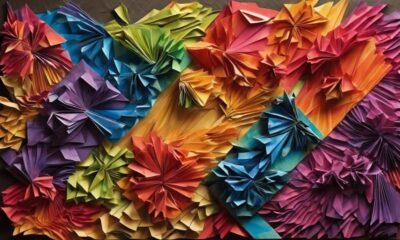
 Art and Culture2 months ago
Art and Culture2 months agoThe Artist's Philosophy That Will Change How You See Art
-
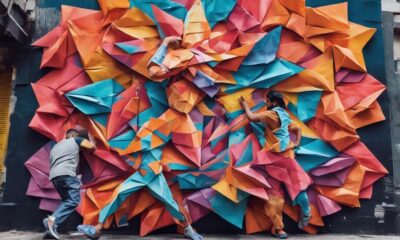
 Art and Culture2 months ago
Art and Culture2 months agoMeet India's Rebel Street Artist You Need To Know
-

 Art and Culture2 months ago
Art and Culture2 months agoRabindranath Tagore's Paintings of Women That Will Captivate You
-

 Art and Culture2 months ago
Art and Culture2 months agoThe Bizarre Art Movement Inspired By Arabian Nights
-

 Art and Culture2 months ago
Art and Culture2 months agoMind-Bending Street Performance You Have To See
-

 Art and Culture2 months ago
Art and Culture2 months agoThe Secret Delhi Art Studios You Need to Visit
-

 Art and Culture2 months ago
Art and Culture2 months agoRediscovering Bengal's Forgotten Modern Genius








